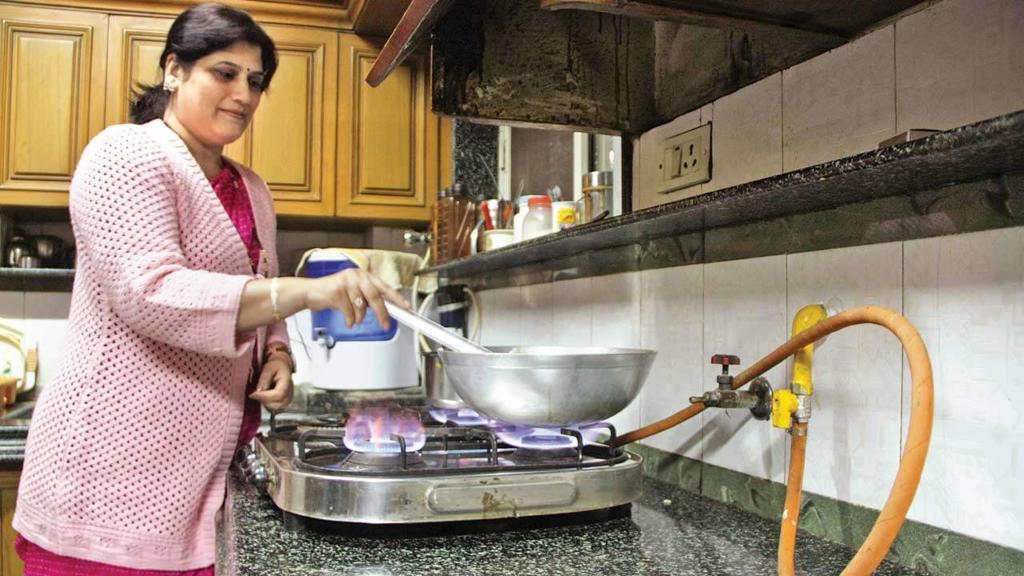In a country with rampant poverty, people who live under the poverty line look for ways in which they can save money and one of the ways to do that is to burn coal or wood instead of buying LPG cylinders which are expensive if not subsidized. But saving money here can result in various other problems like asthma that could lead to some serious repercussions. The usage of unclean fossil fuels can result in various health hazards, like heart disease, stroke, chronic obstructive pulmonary disease, and lung cancer. Young kids can also get respiratory problems due to indoor air pollution.
The government after 2014 realized this issue facing our country and decided to do something about it. They launched the “Ujjwala Scheme” in 2016 which is a scheme of the Ministry of Petroleum & Natural Gas for providing LPG connections to women from Below Poverty Line (BPL) households. In India, the poor had a very limited access to cooking gas before 2014. Back then, the government used to discuss whether to subsidize 6 cylinders or 9 or 12 and then came the Modi Government which first launched the “Give it up” movement under which many people forfeited their LPG subsidy. This enabled the government to save money and better target it to the needy. For the first time, people were giving up their entitlements to allow the government to redirect these resources towards the empowerment of poor people and the government decided to launch the Ujjwala Scheme to ensure universal cooking gas coverage.
There are many benefits of the Ujjwala Scheme like more than five crore LPG connections have already been provided to BPL households. The Scheme provides financial support of Rs 1600 for each LPG connection to the BPL households, interest-free loan to purchase stove and refill by Oil Marketing Companies. The administrative cost of Rs. 1600 per connection, which includes a cylinder, pressure regulator, booklet, safety hose, etc. would be borne by the Government.
Nearly 90% of Indian households now have access to clean cooking gas, a high increase compared to the earlier statistics of before the launch of this scheme, which was 55%. From 1947 to 2014, there were 13 crore houses that had LPG connections and from 2014 to 2018, 12 crore LPG connections were added. This shows how seriously the Modi government is working towards keeping its promises to the people.
This scheme also marks a huge step towards ensuring energy security. Energy security is basically the combination of natural resources and the availability of natural resources for energy consumption. For a modern economy to work, it’s essential to have cheap access to energy resources. The government in our country is now ensuring energy security by spreading LPG connections network in the entire country. Initiatives were launched in lower, middle and up streams, and many are on the pipelines to lit up the oil sector to pave way for energy security.
Another thing that was ensured before bringing LPG to everyone’s houses was and make the transition to LPG easier was that the Modi government began transferring the subsidy amount directly into the bank account of the customer. Since LPG is now sold at international prices, its illegal diversion to other sectors has reduced. Also, in March 2015, the prime minister made an appeal to the middle-class to give up their subsidies in favour of the poor women. Some 13 million people have foregone their subsidy. It was a brilliant strategy to treat LPG subsidy as an asset.
The refill rates under Ujjwala scheme have also gone up. The data from the Ministry of Petroleum states that around six crore connections were disbursed under the Ujjwala scheme. There were 23 crore refills under the Pradhan Mantri Ujjwala Yojana. Almost 80 per cent of the recipients have opted for a refill of Liquefied Petroleum Gas (LPG) cylinders. The average refilling was four for the Ujjwala connections and in some cases, there were refills up to 12. This shows people’s trust in the scheme and the Modi government.
Another project in the pipeline is the Pradhan Mantri Urja Ganga project under which, the 2,655-km long gas pipeline worth Rs 12,940 crore from Jagdishpur in UP to Haldia in West Bengal, with branch lines to Bokaro in Jharkhand and Dhamra in Odisha, will for the first time take clean environment-friendly gas to the east to fuel its industrial revolution. The project will not just supply CNG to automobiles and cooking gas to household kitchens in cities along the route, but also to industries to meet their feedstock or fuel requirement. Hence, again making sure that energy security is ensured.
So just by providing LPG connections, it can be seen in how many ways the Modi government has helped the people and the women in the country in living a disease free, healthy lifestyle and cooking faster and safer food for their families. By bringing a small change, not only one but many facets of a family life have been improved. The resultant decline in indoor air pollution will seriously reduce the economic burden of asthma and other lung disorders on the poor people of India.
A lot has happened over the last four and a half years and perhaps, the speed and scale of the work of the current government has rightly made the impossible as now possible or as the slogan of the Modi government goes- namumkin abh mumkin hai.
